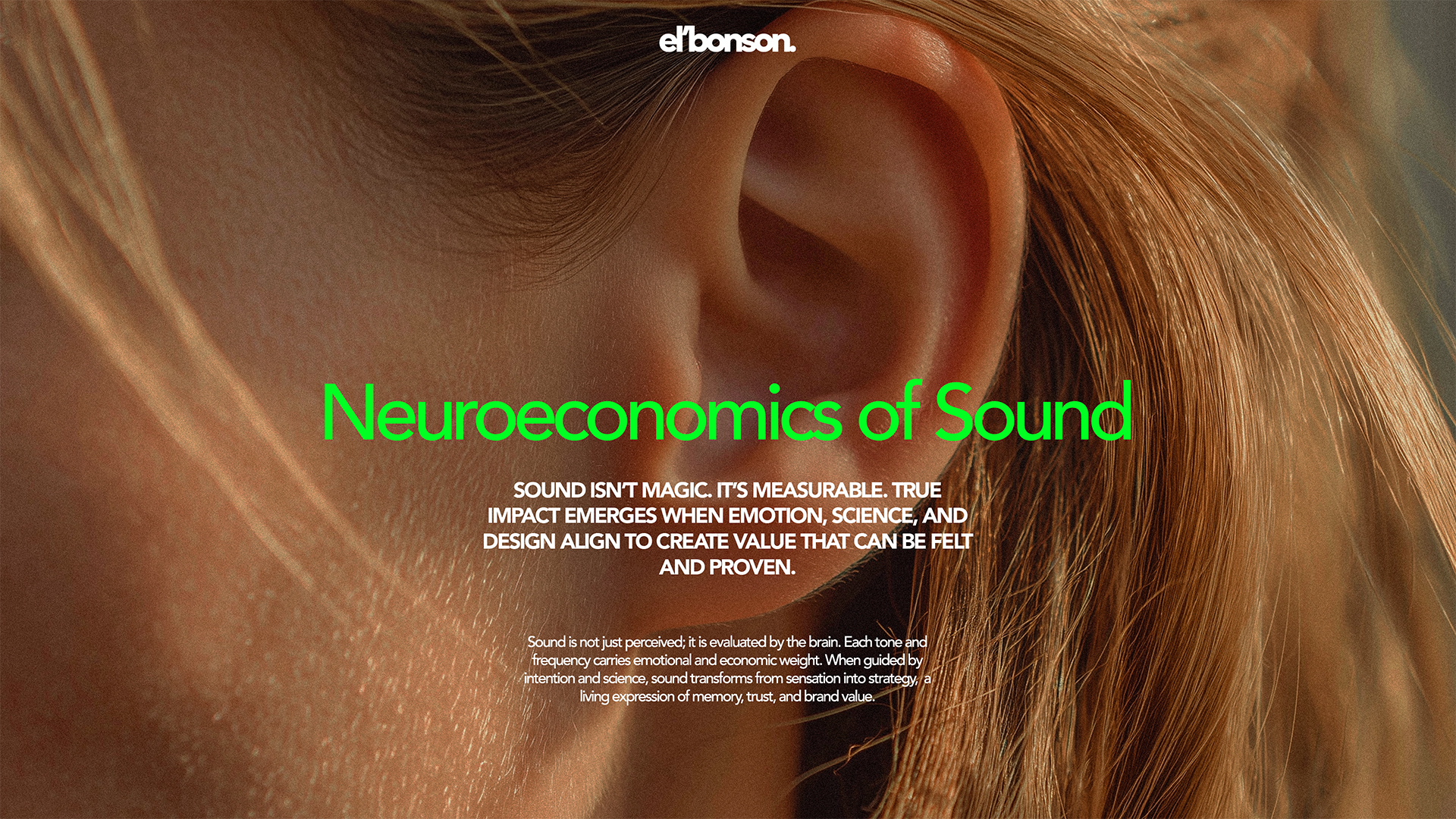
Neuroeconomics of Sound: Measuring What Brands Make Us Feel
A New Way to Understand the Value of Sound
In today’s attention economy, brands compete not only for visibility but for emotional presence. While visuals still dominate most marketing strategies, sound has emerged as one of the most powerful yet underestimated tools to shape perception and decision-making. The field of neuroeconomics offers a new lens to understand why. It helps us decode how the brain translates what we hear into economic behavior, preference, and loyalty.
What Is Neuroeconomics and Why It Matters to Brands
Neuroeconomics combines neuroscience, psychology, and behavioral economics to explain how humans assign value to experiences. In other words, it studies how emotion and cognition interact when we decide what feels “worth it.” When applied to sound design and branding, this science reveals that every tone, texture, and rhythm can influence how much we trust a brand, how long we remember it, and even how much we are willing to pay for its products.
How the Brain Transforms Sound into Value
The brain does not process sound as mere entertainment. It interprets it as information about safety, credibility, and reward. Low frequencies and stable harmonics often trigger feelings of authority and trust, while bright or dissonant tones can increase alertness and attention. From a neuroeconomic perspective, these auditory cues shape our implicit perception of brand value before we consciously think about it. In milliseconds, the auditory cortex collaborates with emotional centers like the amygdala and nucleus accumbens to decide whether something feels “right.”
Emotions, Memory, and the Financial Impact of Sound
This process has measurable consequences. Studies in consumer neuroscience show that congruent brand sounds increase memory recall by up to 96%, while emotionally coherent sonic identities can raise purchase intent by more than 30%. These are not abstract claims but biological reactions that translate directly into measurable business outcomes. When a sound aligns with a brand’s personality and context, it activates neural patterns associated with trust and pleasure, creating a faster and more intuitive connection between consumer and brand.
From Intuition to Data: Measuring Emotional Impact
Traditional marketing metrics such as impressions or clicks rarely capture this depth of engagement. That is where the neuroeconomic approach becomes transformative. By combining biometric and behavioral data, brands can now assess the true emotional and cognitive impact of their sonic assets. Heart rate variability, galvanic skin response, or facial micro-expressions can reveal whether a sound inspires calm, excitement, or stress. This new layer of insight allows marketers to link sound design with KPIs that matter: brand preference, dwell time, and perceived quality.
Beyond Aesthetics: Building Emotional Equity Through Sound
For brands operating in crowded markets, this science opens a path to differentiation that goes beyond aesthetics. Visuals are increasingly homogeneous and ephemeral. Sound, on the other hand, builds emotional equity over time. It creates rituals of recognition that anchor memory and meaning. When done strategically, a sonic identity is not just a piece of music; it is a dynamic system that grows with the brand and adapts to its context, amplifying its perceived value.
El’BonSon’s Approach: Turning Emotion into Measurable Strategy
At El’BonSon, we integrate principles of neuroeconomics into the design and testing of every sonic identity. Our goal is to help brands move from intuition to evidence, turning sound into a measurable source of emotional and financial return. By aligning sonic strategy with the mechanisms of human decision-making, we transform auditory perception into business performance.
The Future of Branding Is Emotional Intelligence
The future of branding will belong to those who understand not only what their brand looks like, but what it feels like to hear it. Because in the end, every sound carries a value — emotional, cognitive, and economic — waiting to be measured and designed.